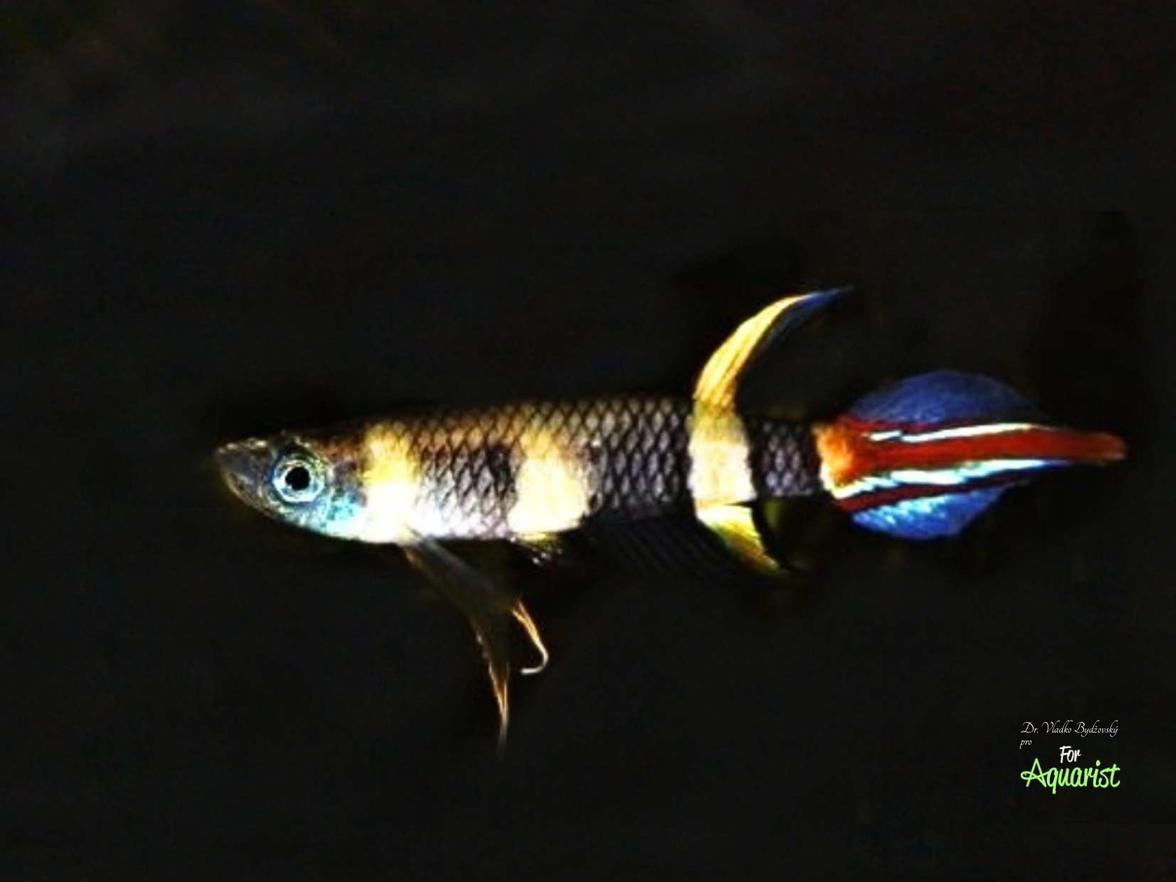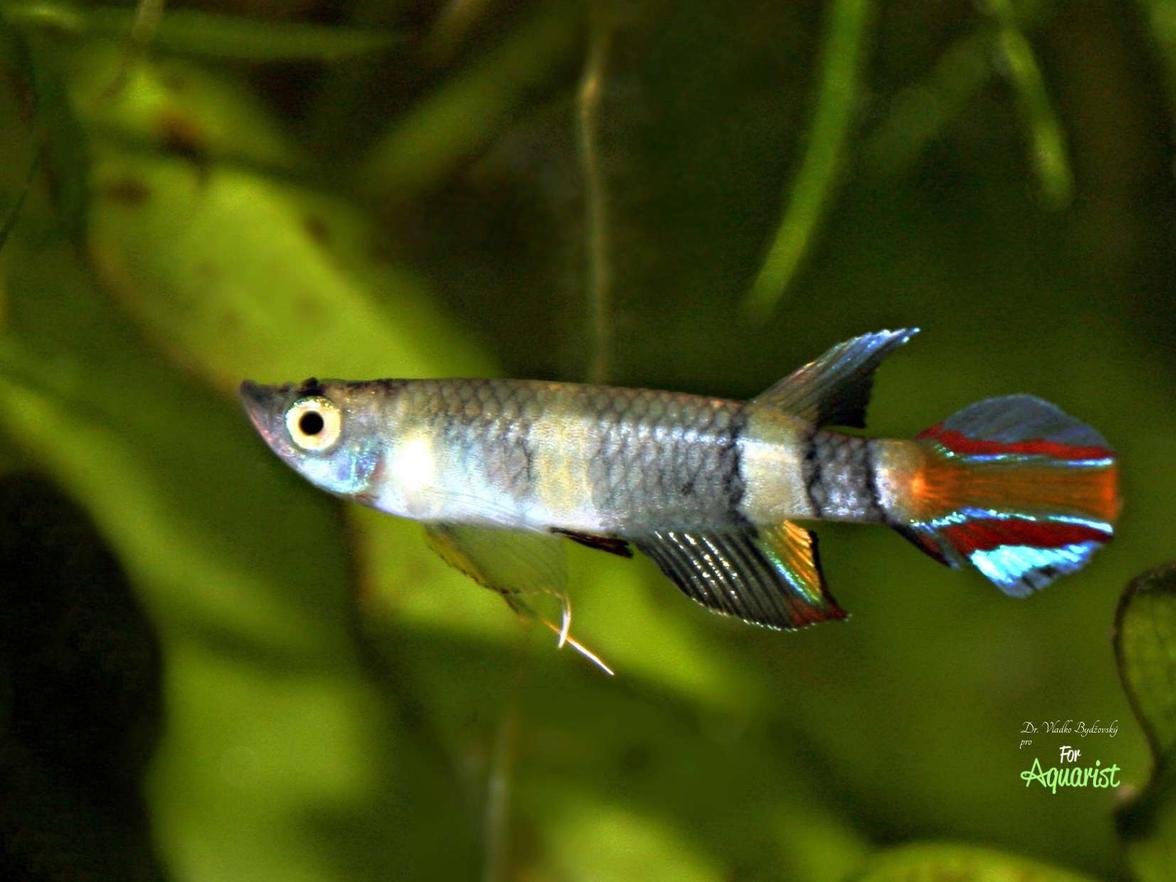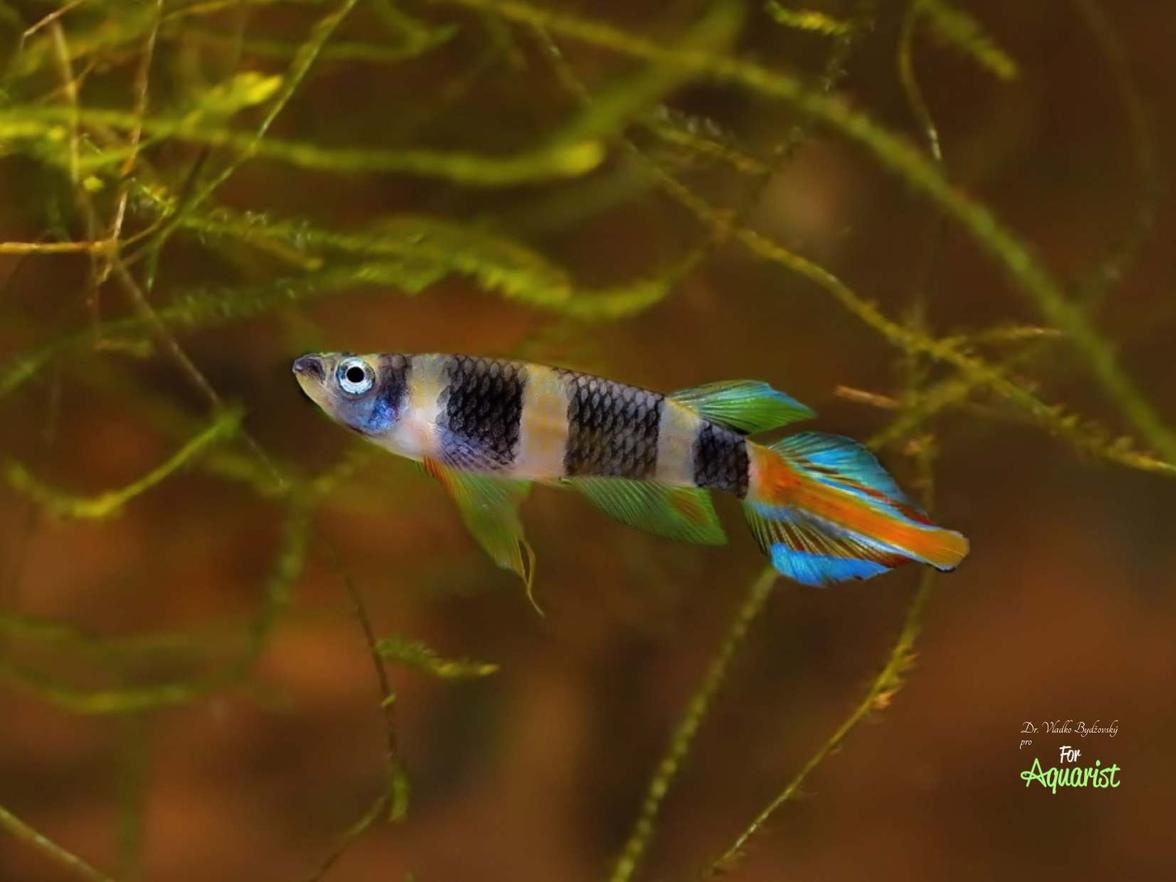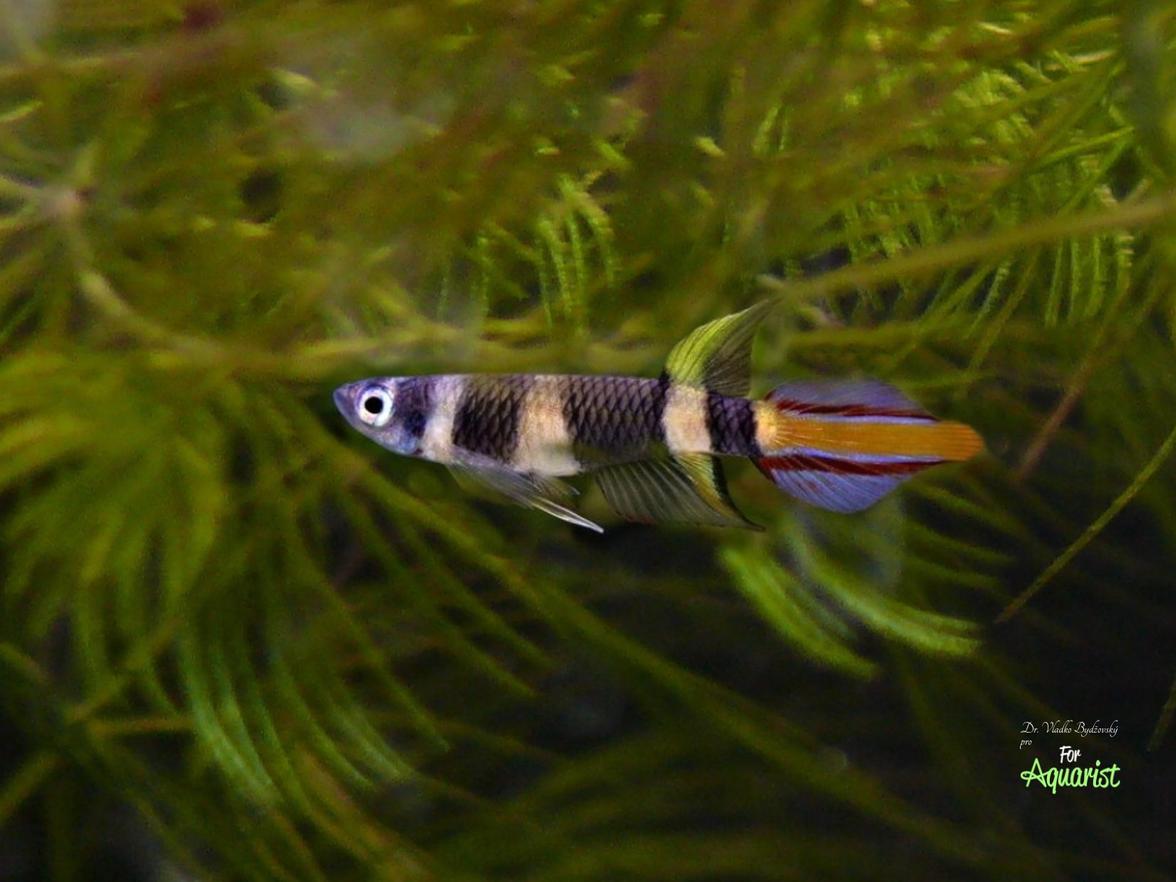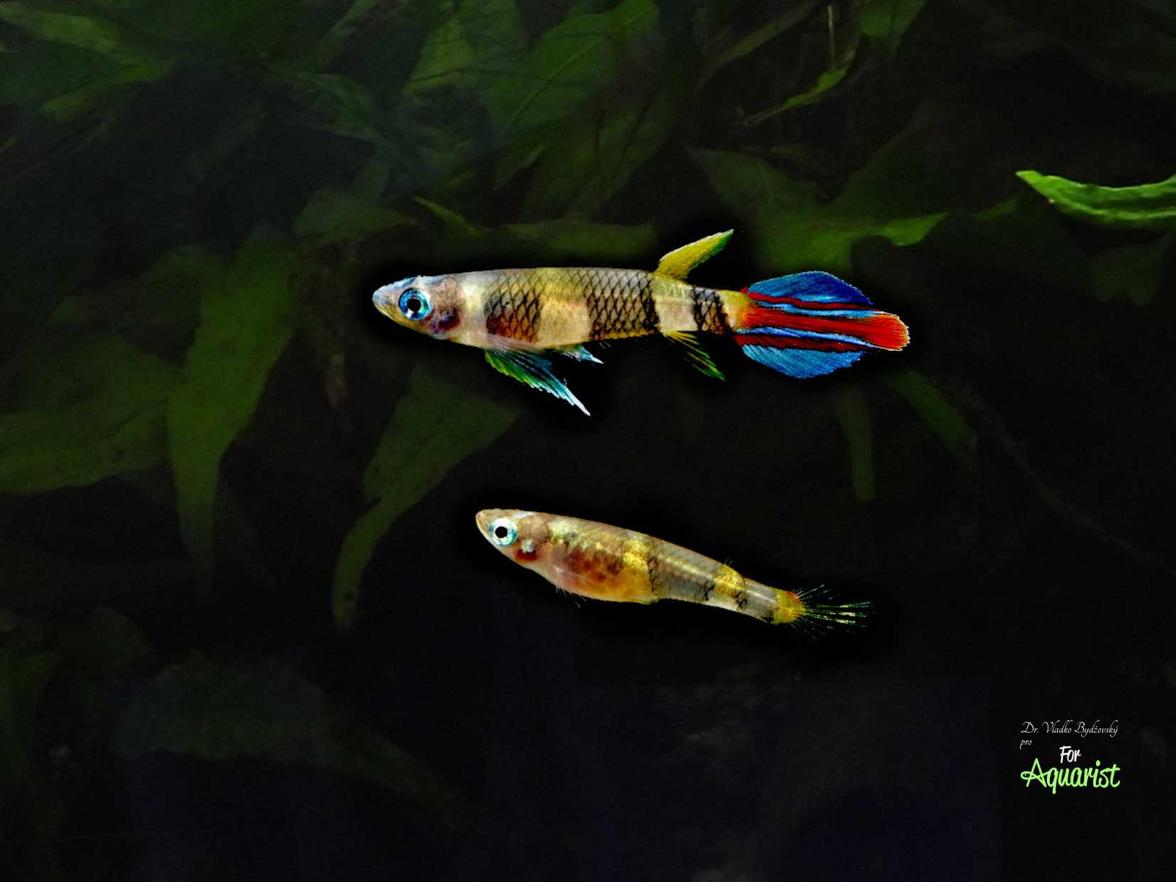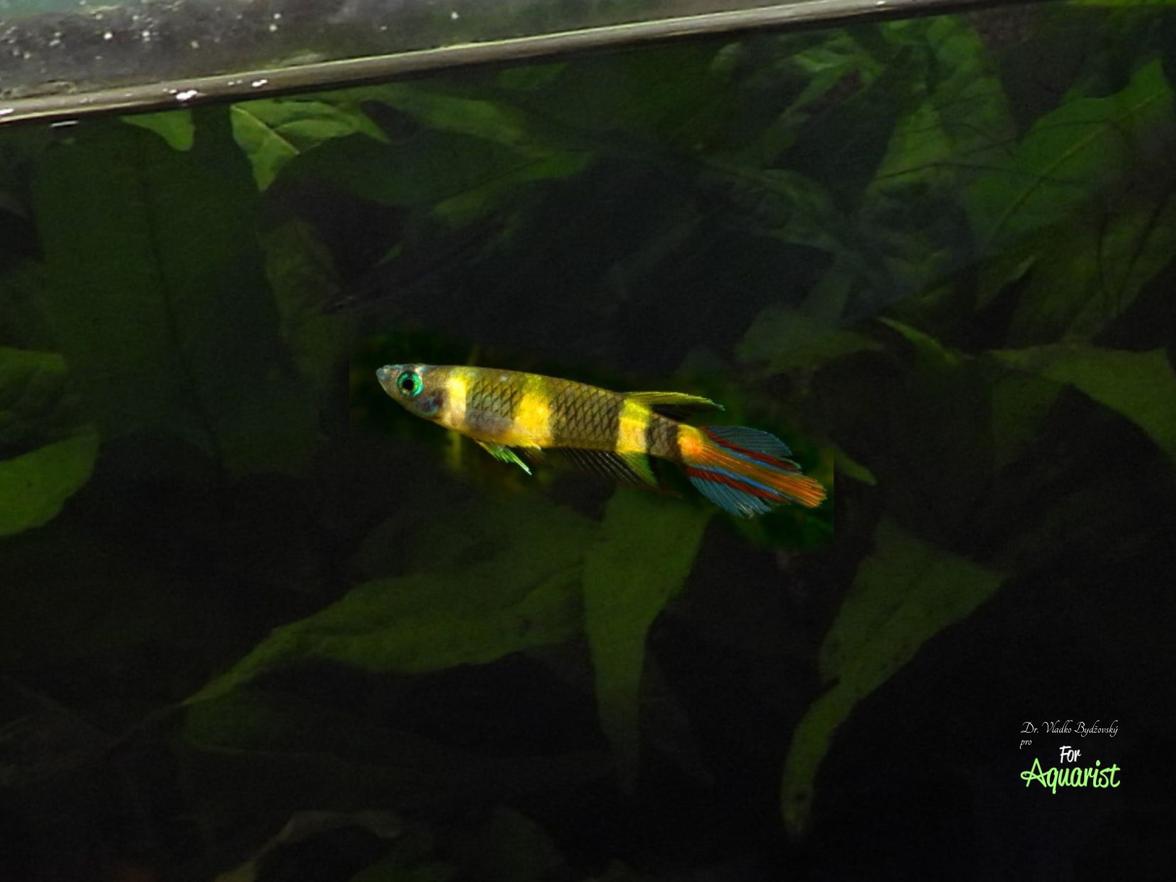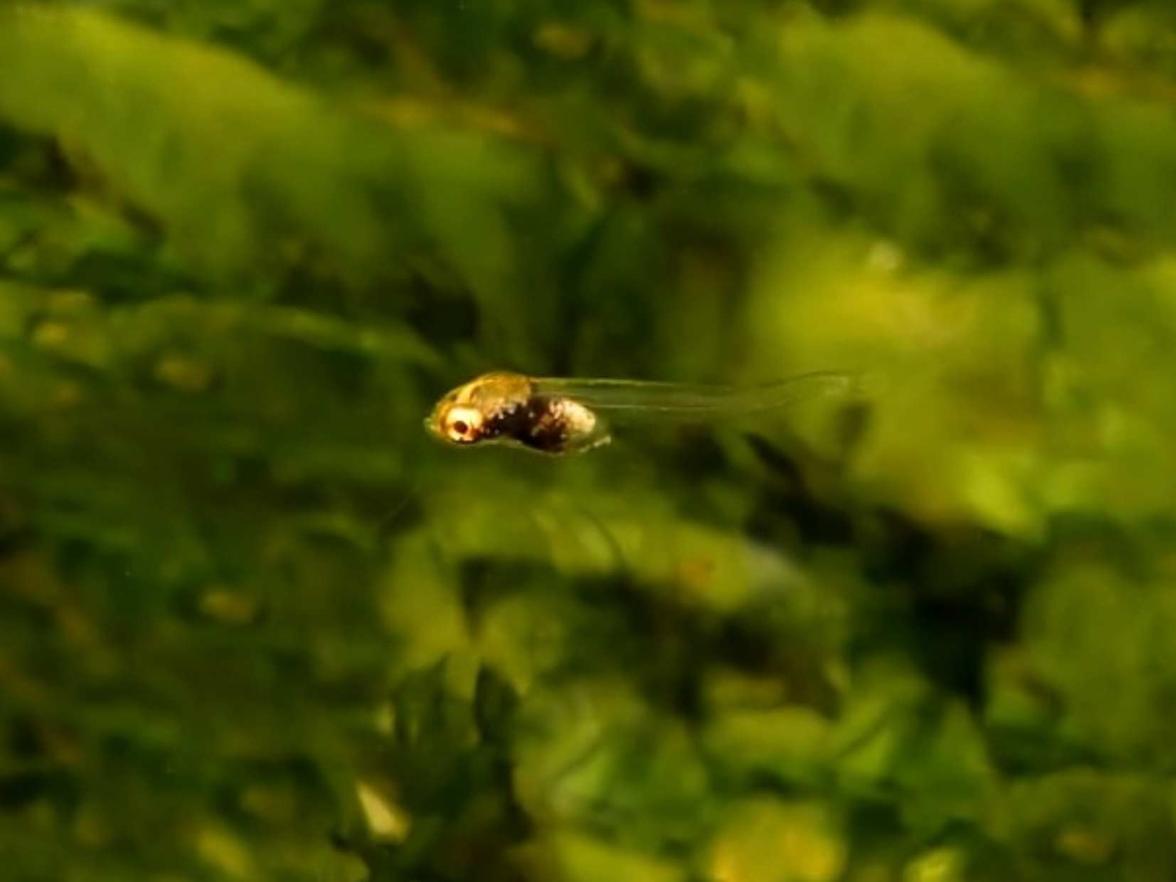Breeding and Rearing Pseudoepiplatys annulatus: A Guide for Every Aquarist
Do you have a small apartment? Do you not have space for a several hundred liter aquarium for cichlids? One option would be here. Among the most interesting dwarf cichlids is the dwarf cichlid, the ringed cichlid. For a long time, it has been shrouded in a number of mysteries. There has been speculation about why there are problems with breeding its fry. Why is it not bred in larger quantities? For years, I have bred this dwarf in a relatively large number, and therefore I would like to unveil some myths presented in the literature. I definitely do not think it is a demanding species. On the contrary, it can also serve as a first fish for beginner cichlid keepers. However, everything has its "buts."
Homeland
The fish originates from West Africa, where it is widespread in stagnant and slow-flowing waters from Guinea through Sierra Leone to Liberia. Here, water values range between 5-5.5°dGH, pH is around 6.5, and temperature is around 25-27°C. Alongside them, Epiplatys bifasciatus, Epiplatys fasciolatus and some other representatives of the family Procatopodinae also live here. The fish belongs to the annual killifish, and throughout the year, we find all its developmental stages in the habitat up to fully grown individuals. Annual species survive dry periods only in the embryonic stage. Fully grown individuals have very little chance of surviving this period.
Characteristics
The very elongated shape of the body indicates that the fish lives below the surface. The position of the mouth reveals that it primarily feeds on surface-dwelling insects. Males grow to a maximum of 3-4 cm, while females are smaller, ranging from 2-3 cm.
As is often the case with species that occur over a large area, the fish vary in fin shape and coloration depending on different localities. This is especially true for males; females are roughly the same everywhere and have more inconspicuous coloring. Only the dark stripes lighten or darken according to mood and environment.
Perhaps the most well-known form is the " Kasawe Forest " variant from a locality in Sierra Leone. It has a red color in the dorsal fin, unlike other variants. In Liberia, there is a colorful variant called " Monrovia ", which has beautiful red edging on the anal and caudal fins, but no red in the dorsal fin; from Guinea, the variant " Conacry " is known.
All of them are social fish, although they are not shoaling. They prefer to be kept primarily in species aquariums, possibly in community. However, only with small and peaceful species. In a community aquarium, they enliven the upper layers of the aquarium without disturbing life in the lower layers.
They are very undemanding in terms of conditions, requiring only quality water and preferably small live food. This is usually lacking in community tanks. Therefore, in my opinion, it is better to keep the fish in a species aquarium. Here, we can also easily expect, with proper care, a plentiful offspring.
Food
The fish require clean water without significant contamination of nitrogenous compounds. In larger tanks, we can better maintain balanced water quality. As for feeding, there is no problem with live food of appropriate size. Ideal are banana worms, which we can easily culture at home. Excellent are small mosquito larvae and small daphnia, but also plankton, preferably water fleas rather than brine shrimp.
With water fleas, we feed only in small doses so that the freshly hatched fry do not become their food. Even with microworms, preferably chopped, the fish consume them. However, I only used this food in the early stages of my breeding; rather, I sometimes add grindal. If food is lacking at the surface, the fish will also venture to the bottom, where they will find something to eat. Diverse food thus poses no obstacle!
Water
In nature, the fish live in very soft and slightly acidic water with a content of humic substances. This can sometimes be a problem. If we live in an area with soft water, we have half the worry. Where the water is hard, we must prepare it.
Too low buffering capacity of soft water leads to unstable conditions in this water, and the lack of salts increases the chances of the fish being attacked by ectoparasites, especially Piscinoodinium. This is perhaps the only disease that threatens our dwarfs. I have not encountered it in my breeding so far. As some breeders confirm, sometimes the fish are decimated directly by an epidemic of this disease. It is necessary to start treatment even before the typical white spots appear on the surface of the body. In the early stages of the disease, the fish huddle in a corner of the tank, have clumped fins, and look tired.
They lack their usual movement activity. By adding kitchen salt - 1 tablespoon per 20 liters of water, this danger is reduced. The fish feel good in this water, but they only spawn sporadically, and we usually do not raise any offspring. However, this is only for the time until the fish recover, and the salts from the water disappear with further exchanges.
I have had good results with Entizole (BYDŽOVSKÝ, 1990), but today there are more modern preparations that we can use in case of resistance to the disease. To improve the condition of the fish, I add small amounts of ToruMin to the water during its regular exchanges, similar to what is done for the third water for neon tetras.
The water temperature should be 23-24 °C; the warmer the water, the shorter the lifespan of the fish. In good conditions, they can live 2.5-3 years in captivity. Some authors recommend raising the temperature for breeding, but even at this temperature, the fish spawn well, and breeding proceeds completely normally.
Aquarium Setup
The fish do not have significant and special requirements for aquarium setup; I personally prefer an aquarium without substrate, densely filled with Java moss. Some killifish keepers like to use floating plants (Ceratopteris thalicroides, Riccia, Salvinia), among whose roots the fish spawn and hide, as do the fry.
The size of the aquarium can vary. It is better to maintain only a low column of water, usually up to 15-20 cm; a larger floor area is advantageous. I most often used 20-liter aquariums, in which a school of fish swam, usually 2 males and 3-5 females or 3-5 liter spawning tanks, where the fish were placed in pairs, possibly one male to 2-3 females.
It is important to regularly perform small water changes, which are adjusted according to the size of the aquarium and the number of fish kept in it. Of course, the larger the aquarium, the fewer worries there are.
Breeding
Breeding does not pose problems for an average thoughtful aquarist with good observation skills. We can either breed the fish in pairs or in smaller or larger groups.
Initially, I practiced breeding by transferring the parent groups to new spawning tanks after about 10 days. In the old ones, the young hatched, which I gradually siphoned into the fry tanks. However, this process seemed too labor-intensive, so I started transferring the hatched fry. In the breeding tanks, I used the usual České Budějovice water, which was processed by plants into very interesting biological ratios. The total hardness then reached 1-4 °dGH, max. 0.5 °dKH, pH was between 5-6.5; the usual temperature was around 23-24 °C, max. about 26 °C. Breeding occurs continuously if the fish are well-fed.
The male pushes the female over the spawning substrate. If she is ready to spawn, she follows him. The male presses against the female from the side - for a moment, the entire body releases eggs one by one.
In a day, we get about 10 eggs from one pair. The male fertilizes them, and the entire spawning act is then concluded with a tail strike. The eggs stick to the plants; adults do not consume them (again, under appropriate conditions including feeding). After spawning, the male no longer shows interest in the female; during spawning, there is no injury to the female, rather it is about the male showing himself to the female in the best colors and with the most spread fins. The eggs are transparent, about 0.8-1 mm in diameter.With careful inspection of the aquarium, we can easily see them if we have good eyesight. I have found that using breeding glasses limits the ability to see the eggs correctly. "When I was younger," I had no problem catching the young; now, with the use of glasses, I have to work hard to find the newly hatched fry at all. They are only about 3 mm long.
I do not catch the eggs; rather, it is more advantageous to collect individual fry floating just below the surface daily before dawn using a flashlight directed at the surface and transfer them to a fry tank, where they have a better chance of being well-fed.
Thus, we can separate the fry into individual fry tanks after about a week, where the fry are of roughly the same size. Perhaps the best starter food is brine shrimp. If we have vinegar eels available, that is ideal. However, we only have this option for a few weeks a year.
Depending on the temperature, the eggs develop for 6-10 days, gradually darkening; on the 5th-6th day, we can distinguish the eyes of the embryos, then it does not take long until hatching occurs. Immediately after hatching, the fry swim to the surface, where they hide among the plants (possibly the roots of floating plants).
The fish grow relatively quickly, not entirely uniformly; after a week, they are already 6-7 mm, and after about 3 weeks, dark stripes begin to appear - the fish are already 10-12 mm. After 8-10 weeks, when the fish are already well 1.5 cm, we begin to recognize differences between the sexes. I have not observed any signs of cannibalism even among the fry, but just to be safe, I prefer to sort the fish. What if?
Sexual maturity is reached in about 4-6 months.
The images show how great the color difference is among individuals from different localities:
- Pseudoepiplatys annulatus male.
- Pseudoepiplatys annulatus male.
- Pseudoepiplatys annulatus male.
- Pseudoepiplatys annulatus male.
- Pseudoepiplatys annulatus male.
- Pseudoepiplatys annulatus male.
- Pseudoepiplatys annulatus 7-day-old individual.
